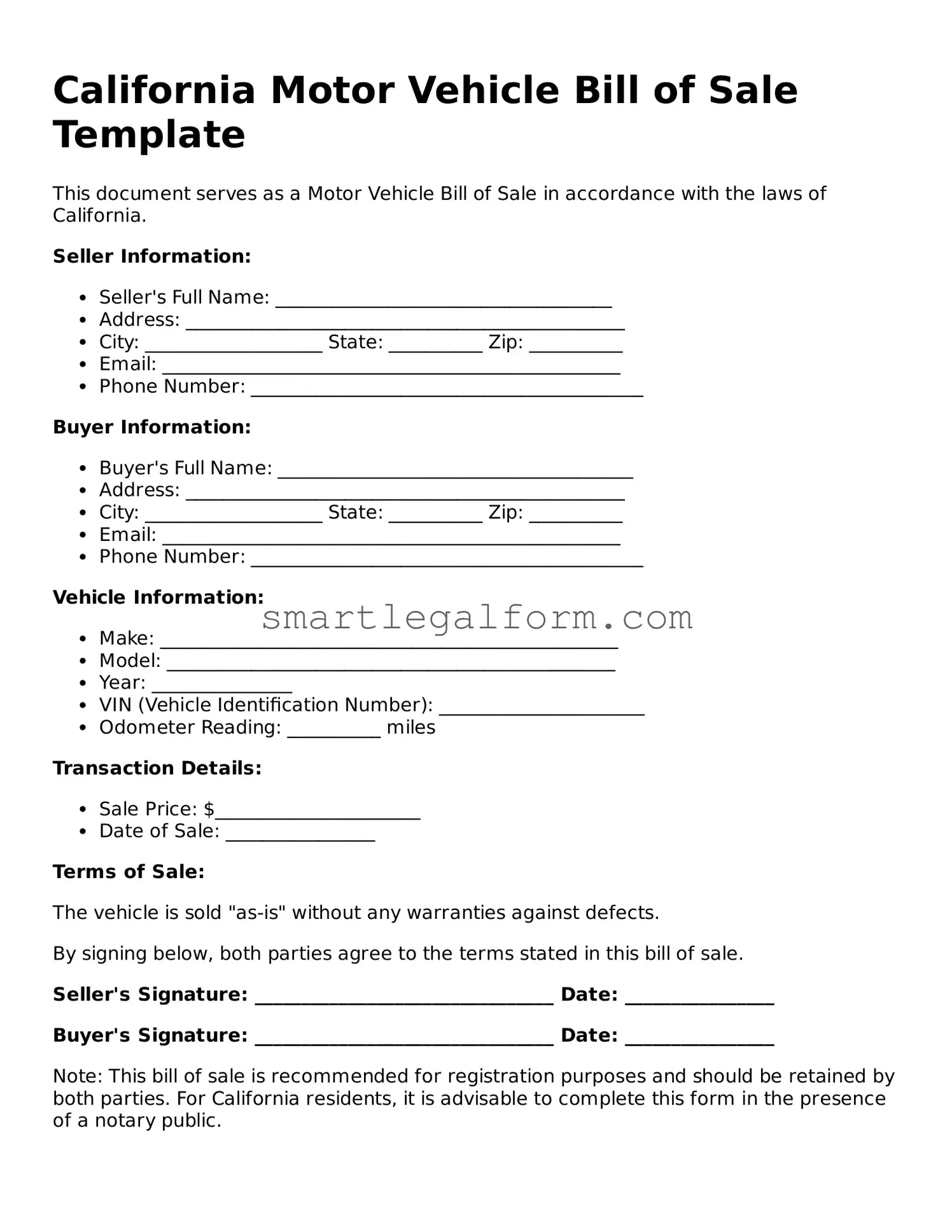California Motor Vehicle Bill of Sale Template
This document serves as a Motor Vehicle Bill of Sale in accordance with the laws of California.
Seller Information:
- Seller's Full Name: ____________________________________
- Address: _______________________________________________
- City: ___________________ State: __________ Zip: __________
- Email: _________________________________________________
- Phone Number: __________________________________________
Buyer Information:
- Buyer's Full Name: ______________________________________
- Address: _______________________________________________
- City: ___________________ State: __________ Zip: __________
- Email: _________________________________________________
- Phone Number: __________________________________________
Vehicle Information:
- Make: _________________________________________________
- Model: ________________________________________________
- Year: _______________
- VIN (Vehicle Identification Number): ______________________
- Odometer Reading: __________ miles
Transaction Details:
- Sale Price: $______________________
- Date of Sale: ________________
Terms of Sale:
The vehicle is sold "as-is" without any warranties against defects.
By signing below, both parties agree to the terms stated in this bill of sale.
Seller's Signature: ________________________________ Date: ________________
Buyer's Signature: ________________________________ Date: ________________
Note: This bill of sale is recommended for registration purposes and should be retained by both parties. For California residents, it is advisable to complete this form in the presence of a notary public.
